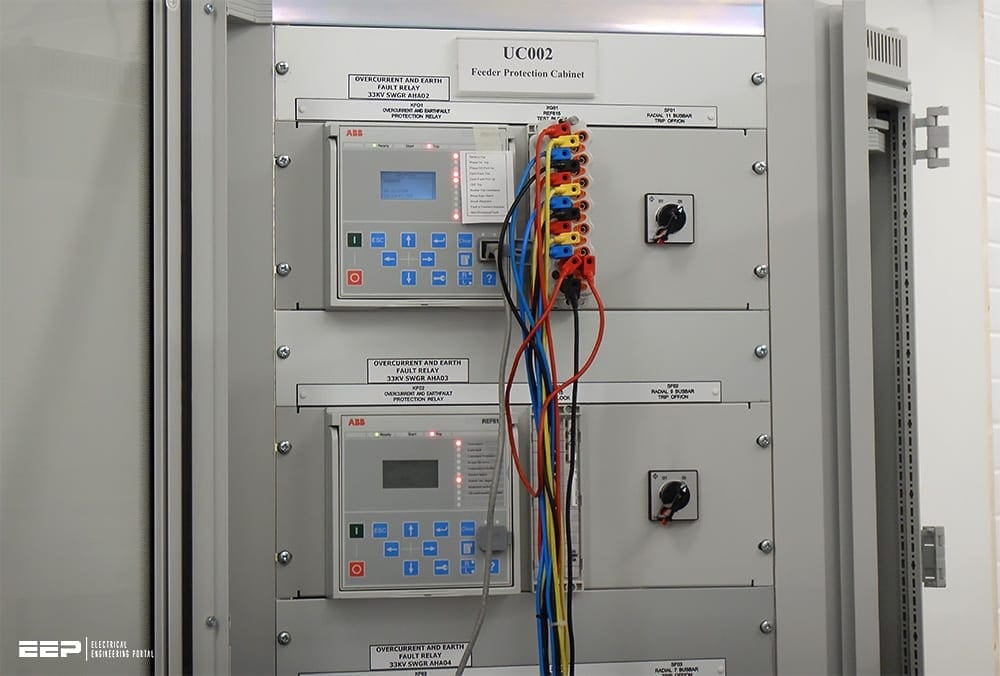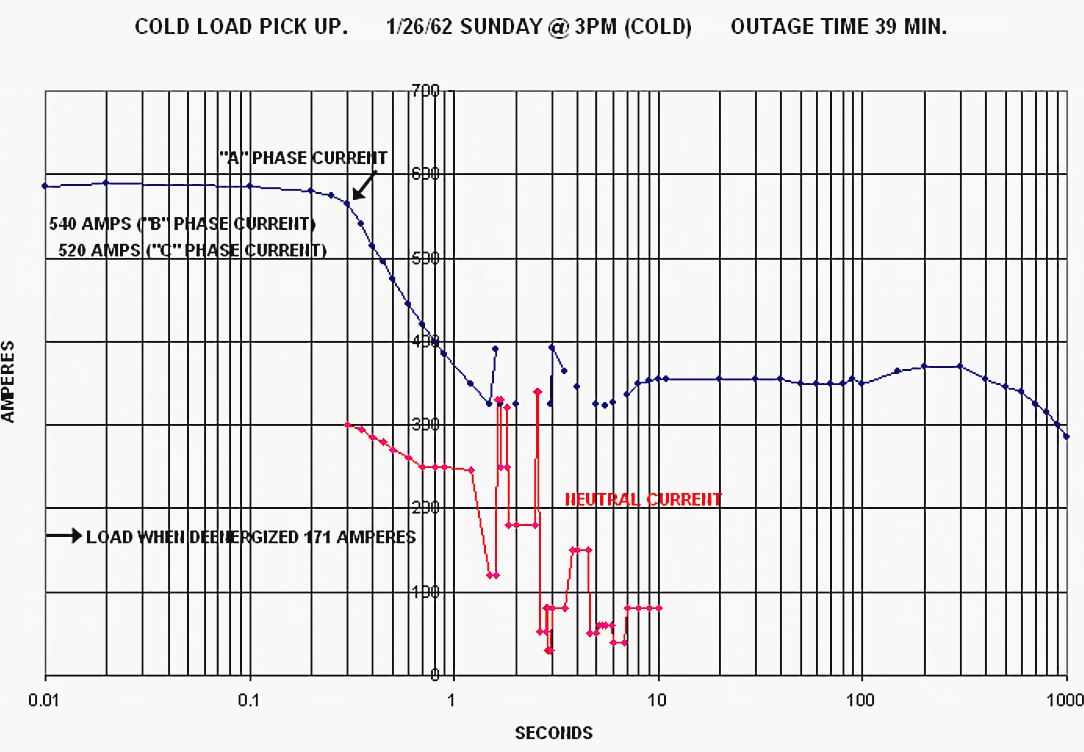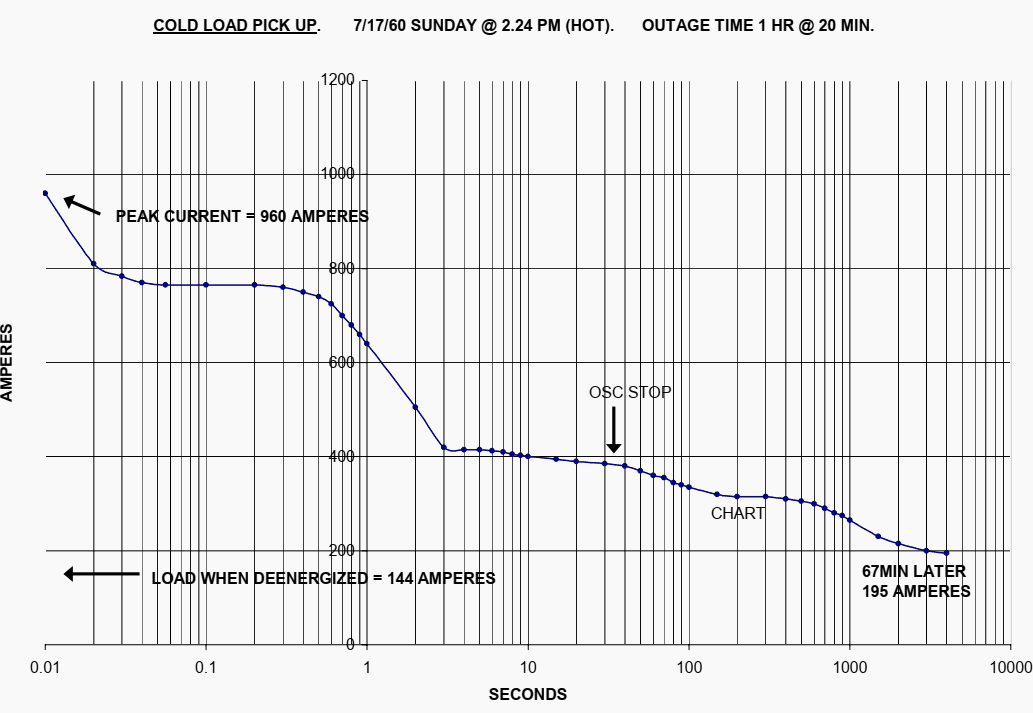Introduction to cold load pickup current
Usually when a distribution circuit is restored after an extended outage, the demand is greater than before the outage. Attempting to pick up this load can be problematic because the initial load demand after an outage can exceed the load demand that would have been observed at any time before the outage.

This phenomenon is referred to as cold load pickup because the power supply has been unavailable for a period of time so that the load has reached a “cold” state before being re-energized. Since in most cases cold load pickup current is greater than pre-outage current; cold load pickup affects fault detection.
That is, protective relays can misinterpret the cold load pickup condition as a fault and initiate de-energization of an unfaulted circuit.
The goal of this paper is provide an understanding of the cold load pickup phenomenon and the options available with modern protective relays so improvements in the protection of distribution circuits can be achieved.
Description/Definitions
Cold Load Pickup
Cold load pickup is the phenomenon that takes place when a distribution circuit is reenergized following an extended outage of that circuit. Cold load pickup is a composite of two conditions: inrush and loss of load diversity.
The magnitude of cold load pickup current is a combination of non-diverse cyclic load current, continuously operating load current, transformer magnetizing current, capacitor inrush current, etc. The combination can result in current levels that are significantly higher than normal peak load levels.
Cold load pickup is primarily an overcurrent condition. If degraded voltage is also a concern, then the application of voltage sensitive relays should also be considered.

Magnetizing Inrush
Magnetizing inrush current is the transient current required to satisfy the instantaneous flux requirements of transformers when transformers are energized. The magnitude of the initial peak magnetizing current, which is a function of residual flux and energizing voltage, can have an equivalent rms value many times greater than the full-load rating of the transformers.
The duration of magnetizing inrush current is a function of source system and transformer equivalent impedances. The time constant can vary from milliseconds to seconds. Larger transformers will generally have longer decay time constants.
If a transformer has no residual flux, the maximum magnetizing inrush current will occur when the transformer is energized at the point where the source voltage is zero. In a three-phase system, because the three source voltages are 120° apart, inrush will occur on at least two phases.

Loss of Load Diversity
Loss of load diversity is the part of cold load pickup that occurs when distribution circuits are restored following sustained outages of several minutes to several hours. The concern is that the naturally occurring, random switching of a group of loads that independently cycle on and off may be lost. These loads are typically cycled based on temperature, pressure or liquid level.
In this report, loads that cycle on and off by independent controls in load units are referred to as cyclic loads. Diversity refers to the percentage of independently controlled, cyclic loads that may be energized at any given time during normal circuit operation – 1 of 2 would be 50% diversity.
The loss of load diversity may persist for many minutes before the random operation of independent controls returns to normal.
| Title: | Cold load pickup and inrush problems in protection of distribution feeder circuits – Working group D1 at the Line Protection Subcommittee of the Power System Relay Committee of The IEEE Power Engineering Society |
| Format: | |
| Size: | 248.5 KB |
| Pages: | 30 |
| Download: | Here 🔗 (Get Premium Membership) | Video Courses | Download Updates |



but nice job